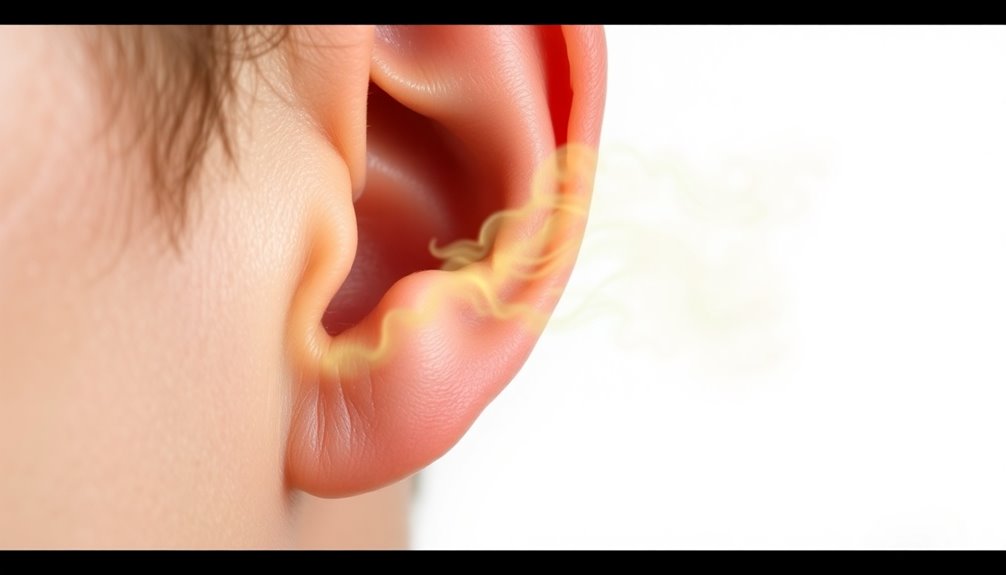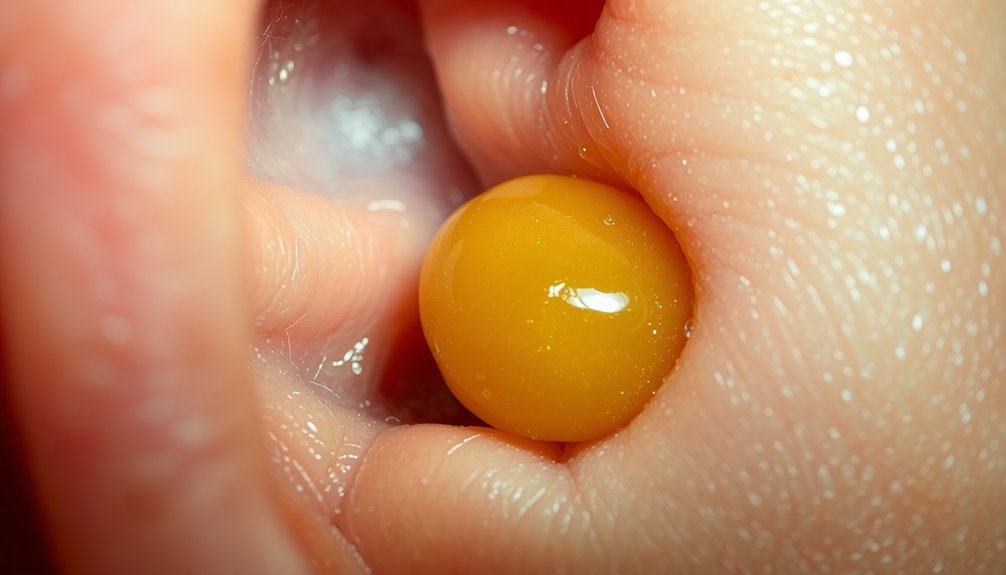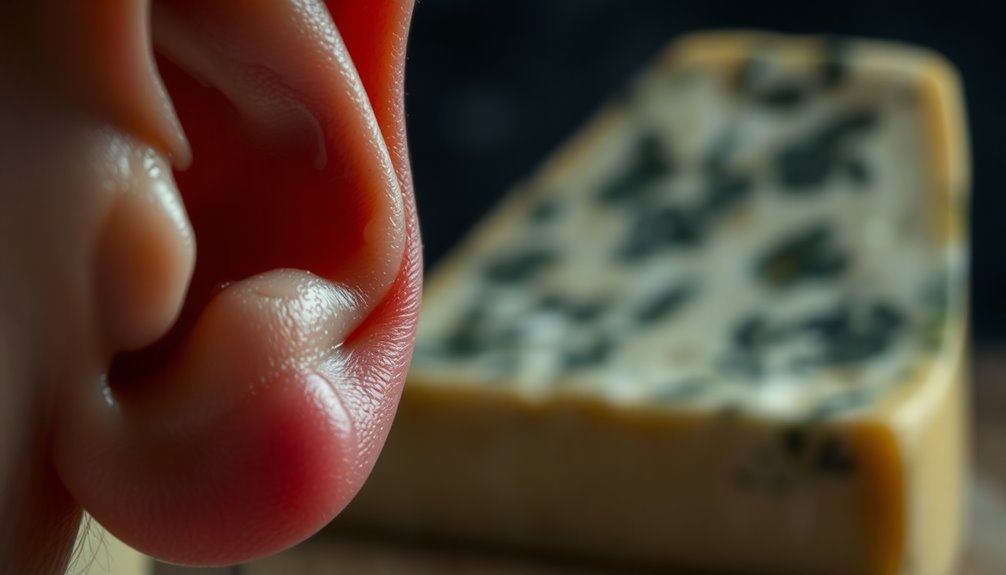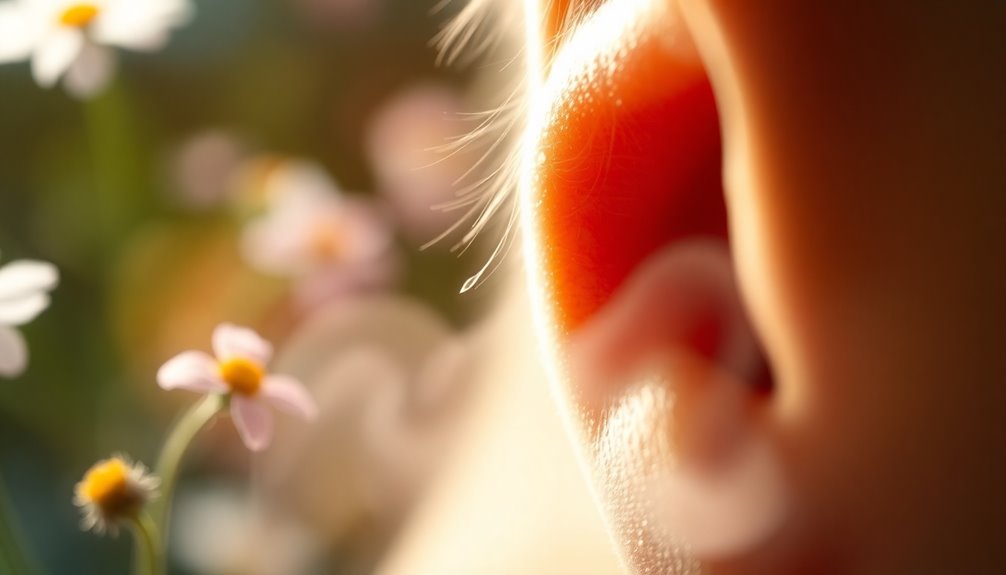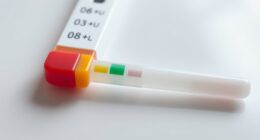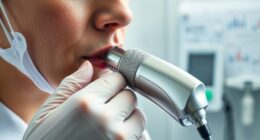The Bebird trend is taking social media by storm, turning ear cleaning into a captivating spectacle. This device features a high-resolution camera and real-time mobile connectivity, allowing you to inspect your ear canal like never before. However, while it's entertaining, be cautious; many audiologists warn that DIY ear cleaning can cause serious harm, such as eardrum damage and infections. Plus, most ears naturally clean themselves, making invasive tools often unnecessary. If you're curious about the balance between fun and safety in ear care, there's plenty more to discover about this viral phenomenon.
Key Takeaways
- The Bebird device features a 3 MP camera and LED lighting, allowing users to inspect their ear canals in real-time via mobile devices.
- DIY ear cleaning is trending but poses serious risks, including eardrum damage and infections, prompting concerns from audiologists.
- Earwax removal videos using Bebird devices have gained popularity on social media, fueling the trend of at-home ear cleaning.
- Despite its appeal, experts recommend professional ear cleaning to avoid complications associated with home methods like using sharp objects.
- Companies like Bebird are capitalizing on the growing interest in ear hygiene, promoting innovative products for safer ear care solutions.
The Rise of Ear Cleaning Trends

In recent years, the fascination with ear cleaning has skyrocketed, driven by a blend of increasing awareness and innovative products. You might be surprised to learn that the global earwax removal market is projected to reach a staggering USD 1,967.5 million by 2024. This growth, at a CAGR of 7.1% from 2024 to 2034, reflects a rising demand for minimally invasive solutions and a deeper understanding of ear hygiene. Additionally, the Microsuction Equipment category holds a significant market share, indicating a preference for advanced removal techniques among consumers.
Technological advancements are paving the way for more effective and user-friendly products. You'll find innovative ear drops and sprays, which are becoming consumer favorites due to their non-invasive nature. With an average of 135,000 monthly searches, ear drops are especially popular. Ergonomically designed ear picks and advanced irrigation kits are also gaining traction, despite their need for medical supervision.
However, it's essential to remember that self-cleaning can pose risks, as audiologists caution against pushing wax deeper into the ear. As awareness grows, you're likely to see a continued interest in ear cleaning trends, emphasizing safety alongside convenience. The market is responding to your needs, making it easier than ever to maintain ear health.
Bebird: The Viral Device
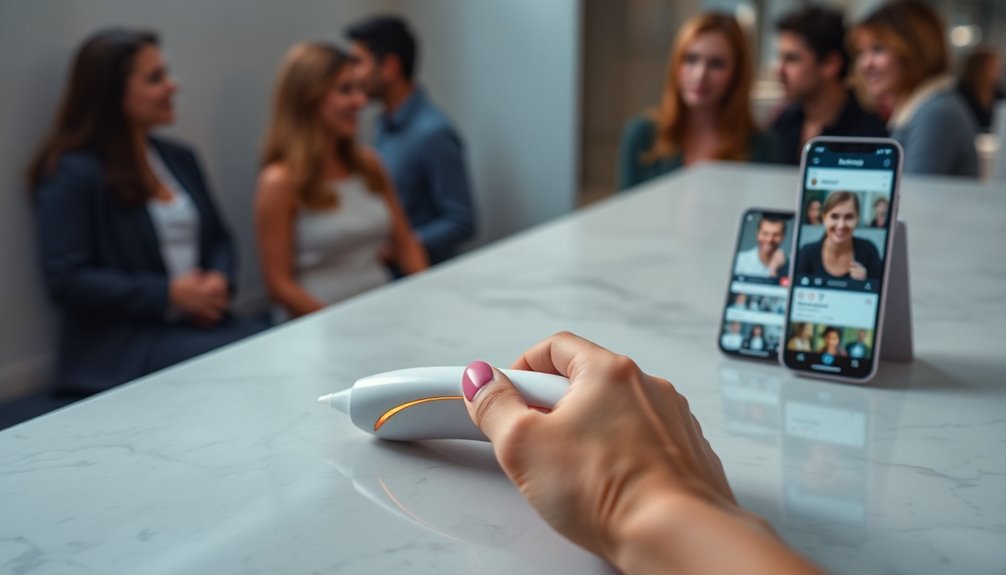
With the surge in ear cleaning trends, the Bebird device has emerged as a viral sensation, capturing the attention of those seeking a modern solution for ear hygiene. This innovative gadget features a 3 MP camera, providing a stunning 2K high-resolution view of your ear canal. Its 3-axis gyroscope ensures a stable, 360° perspective, allowing you to inspect every nook and cranny. The included silicone tips—six or more—offer a personalized and safe cleaning experience tailored to your needs. You'll love the shadowless LED lighting that illuminates your ear for precise visibility. Zoom in with up to 10x magnification for detailed inspections. The Bebird app connects seamlessly via WiFi, enabling real-time transmission of high-quality images to your smartphone or tablet. Some models even support live video sharing for telemedicine consultations!
While using the Bebird device, remember to exercise caution and avoid blind manipulation of your ear canal. It's not recommended for children under 16 years old, and you'll need a basic understanding of what you're seeing to prevent any damage. With features like waterproof technology and varying battery life, the Bebird is truly a cutting-edge tool for ear care.
How TikTok Influences Ear Care
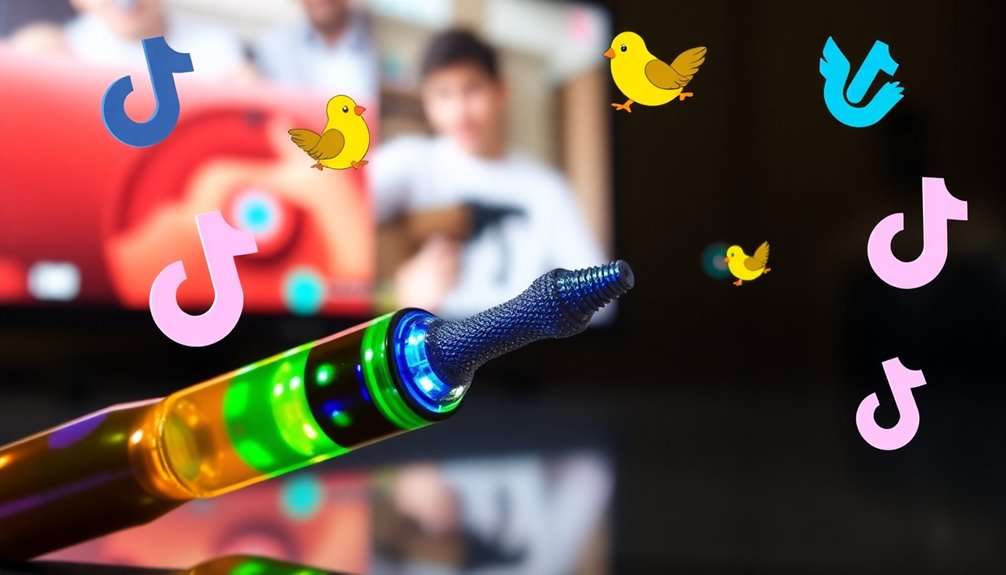
The Bebird device may have sparked interest in modern ear cleaning, but TikTok has taken the fascination to a whole new level. With ear cleaning videos racking up over 378.5 million views, it's clear that people are captivated by the spectacle of earwax removal.
Many users are imitating various methods showcased in these viral clips, including the use of harsh chemicals and tools, despite the potential risks involved. Natural ear cleaning mechanisms indicate that ears are designed to be self-cleaning, requiring minimal intervention.
You might find yourself drawn to these trends, believing they're effective and necessary. However, studies show that the use of Q-tips, olive oil, and other techniques has surged, leading to an increased risk of ear infections and damage to the ear canal.
Social media's obsession with gross content only fuels this behavior, pushing more individuals to try unsafe methods at home.
Audiologists warn against DIY ear cleaning, emphasizing that the ear is designed to self-clean. They recommend professional assistance for earwax removal and advise using soft cloths for outer ear cleaning only.
As you navigate these trends, remember that your ear health is paramount, and safety should always come first.
Risks of DIY Ear Cleaning
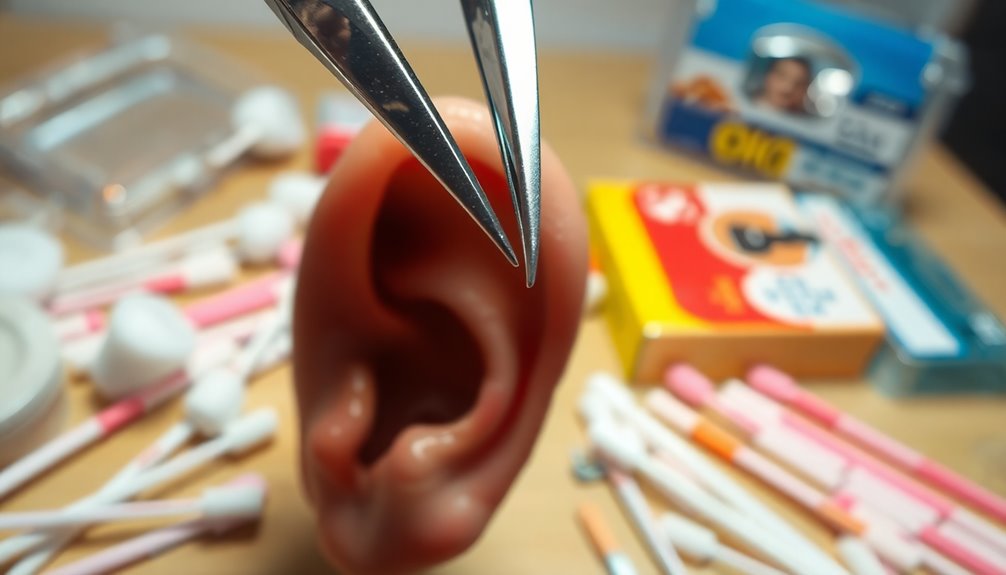
Many people often underestimate the risks associated with DIY ear cleaning. Using sharp objects or even cotton swabs can lead to severe damage. You might unintentionally tear the delicate skin of the ear canal or even puncture the eardrum, resulting in pain and potential infections. Compacted wax can worsen the situation, making it harder to remove and increasing the risk of perforating the eardrum. Furthermore, relying on professional removal ensures that the ear wax is addressed safely and effectively, minimizing the potential for complications.
Irritation from DIY methods can lead to inflammation, making your ear more susceptible to bacterial or fungal infections. Conditions like otitis externa or otitis media can develop, disrupting your ear's natural bacteria balance.
You may also experience other complications, such as temporary dizziness, discomfort, or even tinnitus. In extreme cases, improper techniques can result in temporary or permanent deafness.
The risk of trapped fluid in the ear canal can further elevate pressure and lead to additional issues.
Audiologists' Professional Insights
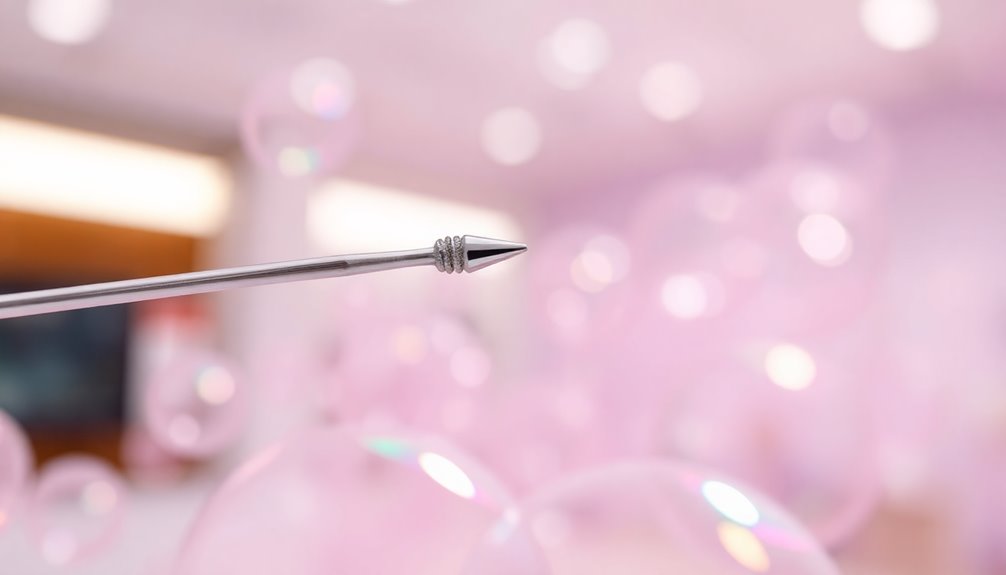
Understanding the importance of professional ear cleaning can save you from unnecessary pain and complications. While earwax serves as a natural protector against dust and bacteria, sometimes it can become stubborn or impacted. In these cases, audiologists recommend professional removal to avoid damage that could arise from DIY attempts.
Using home cleaning methods, like cotton swabs, can actually push wax deeper into your ear canal, increasing the risk of injury. Audiologists typically use safe techniques such as syringe irrigation or micro-suction to remove earwax without causing harm. Additionally, using tools designed for safe ear wax extraction, such as the E3se device, can help avoid the risks associated with improper cleaning methods. It's also worth noting that some assistive devices, like hearing aids, can be affected by excessive earwax buildup.
It's essential to avoid inserting small tools or even your fingers, as these can puncture your eardrum or cause cuts. Many viral cleaning trends on social media, which may involve chemicals or unconventional tools, are strongly advised against by professionals. They can lead to infections or long-term hearing damage.
Instead, gently clean your outer ear with a soft washcloth, and consult an audiologist if you experience discomfort or notice excessive earwax production. Regular check-ups can help you maintain optimal ear health and minimize complications.
The Growing Market for Ear Care
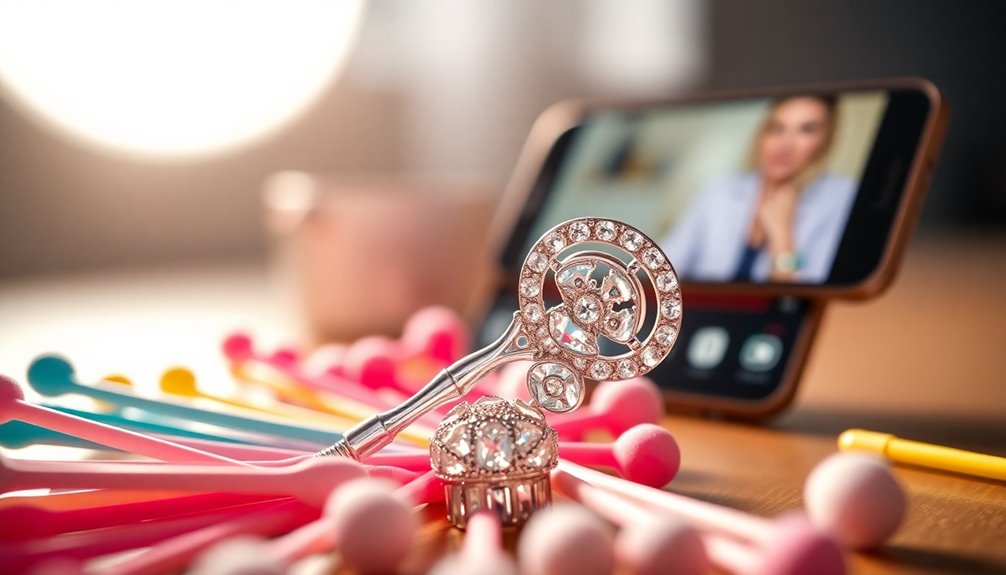
As awareness grows around the importance of ear health, the market for ear care products and services is expanding rapidly. Valued at USD 1.70 billion in 2024, this market is expected to soar to USD 2.67 billion by 2031, driven by a compound annual growth rate (CAGR) of 6.7%. North America is currently the leading region in the global ear health market, holding a significant share.
With the rise of hearing disorders linked to noise pollution and an aging population, more people are seeking effective solutions for ear care. Innovations in otology and advancements in treatments, like stem cell therapeutics, are enhancing the market's appeal.
You'll notice that personal audio devices are on the rise, contributing significantly to the growing demand. The Asia Pacific region, particularly countries like China and India, is leading this growth, thanks to a burgeoning middle-income consumer base and improved healthcare infrastructure.
The market is diverse, featuring products such as ear health devices, diagnostic tools, and supplements for tinnitus care. You can find these products at pharmacies, supermarkets, and online stores, making them easily accessible.
As the trend continues, companies like Sonova and Cochlear are set to play a pivotal role in shaping the future of ear health.
Safety Concerns With Ear Devices
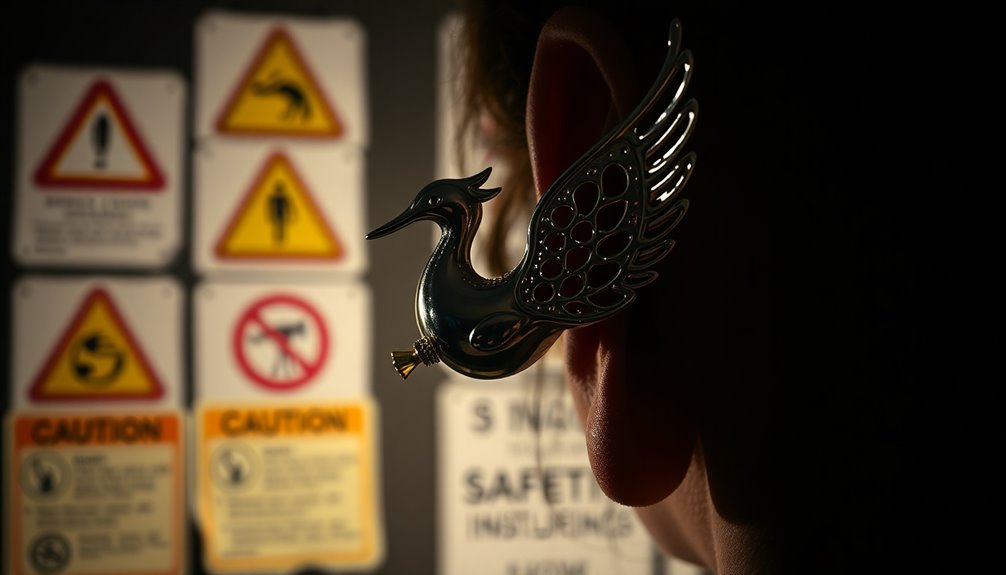
When it comes to ear cleaning devices, safety should be your top priority. Using these tools can lead to serious complications, including damage to your eardrum. A sharp object can puncture this delicate membrane, causing immediate pain and even long-term hearing loss. Certain tools, like spades or scoops, can push wax deeper, increasing this risk and leading to symptoms like nausea or dizziness. Inserting foreign objects into your ears also raises the risk of ear infections, particularly otitis externa. Cleaning too frequently can disrupt the natural bacteria balance and pH levels in your ear canal, making it more susceptible to infection.
Remember, earwax plays a crucial role in trapping bacteria, so don't underestimate its importance. Moreover, using cleaning devices can scratch the sensitive skin within the ear canal, causing pain and potential infections. Tools like cotton swabs often push wax further in rather than removing it. Additionally, Dr. Peerless highlights that anatomical variations in ears may complicate cleaning and increase the risk of injury. Misconceptions about ear cleaning can be dangerous; most ears naturally clean themselves. Ultimately, if you're unsure, it's best to seek professional help rather than risk your ear health with DIY methods.
Best Practices for Ear Health
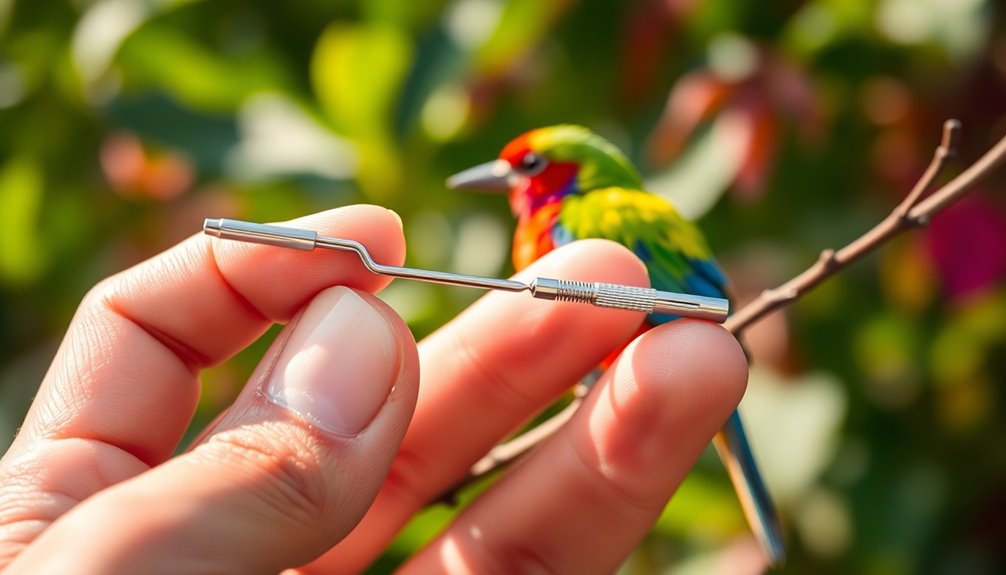
To maintain optimal ear health, it's essential to adopt a few best practices that protect your hearing and prevent complications.
First, always protect your ears in loud environments. Wear earplugs or custom hearing protection, and limit exposure to sounds above 80 dB. Take periodic breaks from noisy areas, and consider using noise-cancelling headphones if you work in a loud setting. Continuous exposure to loud noise increases the risk of hearing loss, so it's crucial to be vigilant.
When it comes to cleaning your ears, avoid using cotton swabs or any small objects in the ear canal. Instead, gently clean the outer ear with a soft cloth during your bath or shower. If you need to irrigate your ears, use a bulb syringe with warm water or saline after softening the earwax.
Also, make sure to dry your ears after swimming to prevent infections.
Keep your music volume under 80 dB and take breaks from headphones to rest your ears. Monitor any hearing changes, especially if you're on medication.
Lastly, schedule annual hearing exams and checkups with a healthcare professional to stay on top of your ear health. Engaging in relaxation techniques can also help reduce stress and potential tinnitus.
Frequently Asked Questions
Can Children Use the Bebird Ear Wax Removal Device Safely?
You should be cautious when considering the Bebird ear wax removal device for children.
While it's designed with safety features, kids may not understand the importance of gentle use. The risk of damage to their ear canal or eardrum is significant if not handled properly.
It's best to consult a pediatrician before using any ear cleaning device on children, as they often don't need regular cleaning and can usually self-clean effectively.
How Do I Clean the Bebird Device After Use?
To clean your Bebird device after use, first, remove the ear tips and rinse them under warm water.
Wipe the main body gently with a soft cloth to remove any dirt.
If needed, use a little alcohol on a cotton swab to clean the camera lens, but avoid harsh chemicals.
Ensure everything is dry before reassembling.
Store accessories properly to protect them from sunlight and dust for optimal performance.
What Materials Are the Bebird Accessories Made From?
The Bebird accessories are made from safe, high-quality materials. The ear spoons use medical bio-grade PC material, ensuring they're gentle and effective for ear wax removal.
The camera features a high precision lens, while the structural components are crafted from durable, eco-friendly materials.
You'll find that the device is designed for safety, with reusable parts and multiple replacement tips to accommodate different ear sizes, making it user-friendly for everyone.
Is the Bebird Device Suitable for People With Hearing Aids?
Yes, the Bebird device is suitable for people with hearing aids.
It's designed to maintain ear hygiene without interfering with your hearing aid fit or function. You can easily inspect and clean your ear canal, ensuring your hearing aids perform optimally.
With its built-in camera and LED lights, you'll see clearly while cleaning, reducing any risk of damage to both your ear canal and hearing aids during the process.
Where Can I Purchase Replacement Accessories for the Bebird Device?
You can purchase replacement accessories for your Bebird device directly from the official Bebird website.
Just head to the specific product page for the Bebird Ear Cleaner Original Waterproof Replacement Accessories Set. They offer global shipping, and if you're in the US, you'll enjoy free shipping on your order.
The set includes various ear spoons and is compatible with Bebird R1 and other specified models.
Enjoy cleaning with quality, medical-grade materials!
Conclusion
In the age of viral trends, ear cleaning has taken off, especially with devices like Bebird gaining popularity. However, while it might be tempting to jump on the bandwagon, you should always prioritize your ear health. DIY cleaning can pose risks, and it's essential to heed audiologists' advice. Remember, staying informed and practicing good ear care habits will keep your ears happy and healthy. So, think twice before you dive into the latest trend!


